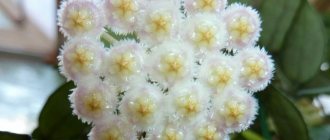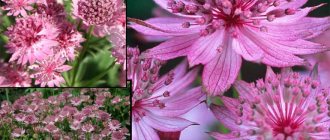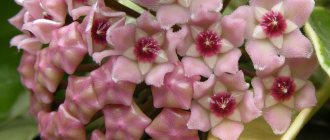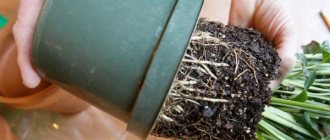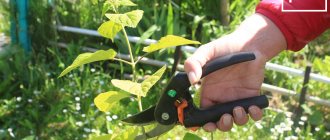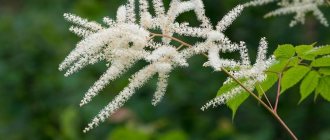Heather crops are traditionally associated only with magnificent garden landscapes, and as indoor plants they are practically unknown in our country. Meanwhile, it is in indoor culture that an amazing representative of heathers, Erica, which is often confused with genuine heathers, even in its homeland, reveals its flowering in a new way. The magnificent red palette of unusual inflorescences and textural, inimitable greenery make this plant a soloist with virtually no competitors. Traditionally, Erica is grown as a winter seasonal plant, discarded after flowering has finished. But during these long months, during which the bushes tirelessly produce new inflorescences and look like a living bouquet, one cannot find equals to this not-so-capricious beauty.
Erica herbacea
Description
Erica is one of the representatives of the heather family, suitable for both landscape gardening and indoor floriculture. The plant is distinguished by a rich range of shades: you can plant Erica of different colors - and then the flowerbed or window sill in the house will become especially spectacular and picturesque.
As a rule, Erica is grown as an annual and dug up after flowering. However, the flowering is so long and decorative that it completely compensates for the short life of the plant.
Kinds
Erica has many types - below is a detailed description of the most popular ones.
Herbal (ruddy)
A shrub reaching a height of no more than half a meter. If you plant several of these specimens side by side, the flowerbed will look like a solid, monochromatic carpet. Herbal Erica has about two hundred varieties, many of which are suitable for the climate of central Russia. Rarely cultivated at home, it is mostly used for landscape gardening. The color of this Erica is pink or crimson - very decorative.
Four-dimensional
A compact ornamental plant of gray-green, less often red, white or pink color. It is interesting because the leaves are collected in decorative whorls, making it especially impressive. Look at the photo of this wonderful plant.
Darlenskaya
A hybrid species that boasts particularly long flowering and a beautiful, elegant appearance. It is better to grow at home, since this Erica is not very resistant to frost. However, it is worth considering that the plant can reach a height of up to a meter, so not every corner of the apartment is suitable for it. The flowers have a pink, crimson or white tint.
Spiked
The small shrub can reach only 25 cm in height. Blooms in summer with soft pink inflorescences.
Gray (ash)
It reaches a height of 20-25 cm, has a decorative spreading crown. The flowers are ash-pink, the foliage is bluish. It grows better at home and does not tolerate cold winters.
Indoor “heathers” and their catchy beauty
Representatives of the Erica , which in nature are considered an invariable adornment of Scandinavian and British landscapes and are known mainly for the beauty of heathlands, are capable of surprising with their diversity. In the genus Eric, which is part of the family of the same name, there are more than 5 hundred species of plants. And although most of them remain wild plants, not introduced into garden culture, and the most famous Erics are garden plants, among the fifty thousand varieties there are also those species that will not refuse to be grown as a solo indoor plant. Genuine heathers (Calluna) are also grown indoors, but their maintenance requires a somewhat specific approach and the heather must be kept outdoors for most of the year.
Only two, but incomparable, types of Erica are grown as a houseplant - the herbaceous Erica (Erica herbacea), which has many magnificent varieties with different colors of inflorescences, and the less capricious, but also less spectacular Erica graceful (Erica gracilis). Both plants have many similarities in the type of flowering, size, and structure of the bushes. Moreover, almost all specimens presented on the modern market are hybrid varieties and their specific origin is sometimes not entirely easy to find out. And species plants are often confused with each other and sold under each other’s names. But you can still distinguish the herbal erica from the graceful one: the flowers of the first are colored only pink or red, while the flowers of the second are pink-lilac-purple. Everything else about the plants is very similar.
Today they are actively experimenting with other types of Eric in the West, trying to increase the range of these plants in indoor representation, but there is no talk of any noticeable “breakthrough” of other types. On sale today you can sometimes find Erica Wilmore (Erica x willmorei) with long, up to 2 cm bell-shaped flowers and Erica ventricosa growing in the form of a spherical bush, but they can be found rarely.
On a note. If you have specimens of other species of heather or heather in your garden, you can try to grow them as houseplants using the cutting method and not transferring the plants after rooting to open soil, but replanting them in a pot and adapting them to indoor conditions from an early age. These are great plants to experiment with.
Erica gracilis
Indoor Ericas are low-growing, very dense evergreen shrubs, the maximum height of which does not exceed half a meter, and is often limited to 40 cm. The diameter of the bushes always exceeds their height; in healthy and strong specimens it can reach 60 cm or more. These shrubs are constantly growing and, if grown as perennials, require increasingly larger containers or timely division. Eric's shoots are erect, densely branched, and form a dense crown. The leaves are typical of all heathers, strikingly small, rich medium, light or dark green, needle-shaped, densely spaced, which creates a unique texture of the crown.
But despite all the beauty of the greenery, the most noticeable feature of indoor erikas, like their garden counterparts, remains flowering. The apical racemes or spike-shaped, elongated inflorescences, consisting of bell-shaped, often almost spherical, miniature, brightly colored flowers, captivate with both their amazing palette of colors and the ability to produce inflorescences in unimaginably large quantities. Small flowers in dense inflorescences harmonize with small leaves. During flowering, the bushes are so abundantly strewn with inflorescences that they turn into a single color (and texture) spot.
Indoor Ericas traditionally bloom on the eve of winter or at the very beginning and show off their flowers until spring. At this time, the rich shades of the red spectrum - pink, lilac, purple flowers - are unusual and unique, not found in any other plants except heathers, or the white-flowering elegant varieties of Erica seem to be an outlandish vision and real strangers in the interiors.
To be successful in growing indoor Ericas as perennials, it is enough to keep them cool. This is the main and basic requirement of these plants, but far from the only one. Erica can hardly be called an easy-to-grow crop; this plant is suitable only for experienced gardeners who are ready for difficulties and can provide this heather beauty with special care and special conditions. This is a plant for connoisseurs who are looking for original accents and non-standard solutions. All the difficulties in growing Erica are more than compensated for by its beauty. Today it is considered one of the most promising and fashionable among winter seasonal plants. But we are just beginning to take a closer look at it, and flowering bushes for indoor use are not very often found on sale.
Composition from Erica
Where to plant
Let's find out which places are best suited for growing the beautiful Erica.
If the plant is intended for home cultivation, it will feel best on a lit windowsill. However, it is necessary to protect the plant from drafts so that Erica develops safely and blooms for a long time.
You should also protect the plant from direct sun - shade the window at midday or place the pot directly in a place with diffused (but plentiful) light. The fact is that exposure to direct sunlight causes the petals to turn pale, thus losing the decorativeness and effectiveness of the plant. Also, the sun can lead to a decrease in the quality of flowering - a decrease in the number of inflorescences.
If Erica is intended to be grown in the garden, it is advisable to place it under the protection of a hedge. In this way, the plant will be provided with both shelter from direct sun and a sufficient amount of rarefied light. Erica is not planted in lowlands and hollows - it does not tolerate stagnant moisture. In waterlogged soil, the plant will be susceptible to fungal diseases.
In landscape design
The heather family, including Erica, is perfect for decorating city, park, and homestead landscapes.
To create interesting compositions, designers make a mix of several types. By planting colorful bushes close to each other (20-40cm), in a year or two you will get a plant carpet of incredible beauty.
Erica grows quickly and mixes well with others. It goes well with decorative dwarf needles and birch. Hulteria acuminate and woolly willow will also make excellent neighbors for heather.
Features of cultivation
Let's find out the most important points regarding growing Erica at home.
Planting should be done in soil that has good drainage properties. As mentioned above, plants of this type cannot tolerate stagnant moisture. The soil needs to be loose, sandy; after watering, the soil should be loosened to provide air access to the roots of the plant.
The best soil in this case is considered to be the following mixture:
- peat - 3 parts;
- river sand - 1 part;
- turf soil - 1 part.
The plant blooms longest when kept in relatively cool conditions. If the air temperature is above +15 degrees Celsius, Erica will refuse to bloom for a long time, shortening the decorative period by several weeks.
Constant access to fresh air is very important for Erica - when growing this species at home, it is especially important not to forget about regular ventilation of the room.
Diseases and pests of Erica
Erica can hardly be called an invulnerable houseplant. In indoor culture, especially in the absence of constant ventilation and access to fresh air, it very often suffers from pests. Spider mites and scale insects are especially dangerous for the plant. It is difficult to wash this plant, and these procedures are often destructive, so it is best to immediately combat the problem with insecticidal preparations. Of course, you should also not forget about the need to maintain high air humidity.
Common problems in growing Erica:
- leaves falling off when the soil dries out;
- drying out of shoots in hot and uncomfortable environments;
- lack of flowering in warm conditions.
Erica in a decorative flowerpot
Landing
Let's get acquainted with the features of planting Erica.
Young Erica seedlings are placed in the ground for permanent residence in early spring, before the start of active vegetation processes. If the transplant comes from a container, it can be done in the summer. Before planting, it is important to make sure that there are drainage holes at the bottom of the pot - this is important to ensure moisture circulation. Drainage is laid at the bottom, and only after that soil is poured.
If the plant is intended to be grown in the garden, you must dig a hole in advance. A depth of 20-25 cm will be enough - the roots of the plant are not too long. At the bottom of the dug hole, it is also necessary to lay a drainage layer of small bricks or crushed stone, and then pour the prepared soil on top.
The seedling (either in a pot or in a garden) is buried in the soil up to the root collar so that the latter is above ground level. If several specimens are planted at the same time, a distance of half a meter must be maintained between them.
Transplantation and substrate
Despite the fact that Erica is most often thrown away after flowering, it can be preserved as a perennial plant, in which case it will need replanting. After flowering is completed, it can either be transplanted into the garden in open soil, or transferred to a new pot. The timing of transplantation for Erica is not critical: it can be done immediately after pruning, or only in early spring, when consistently warm weather arrives and daylight hours begin to increase.
It is very easy to select a substrate for Eric. It must be acidic, consist predominantly of peat or be pure peat, be coarse, and fairly dense. Erica responds well to substrates for rhododendrons, a mixture of equal parts of coniferous, peat soil, humus and sand.
The transplant procedure for this plant is not entirely typical. It is advisable to transfer Erica, keeping a ball of earth around the roots. A middle layer of drainage is placed at the bottom of the container. But during replanting, the soil is not left loose, but compacted very well above the roots, creating a dense layer of soil that perfectly holds the shrub.
Reproduction
Erica is usually propagated vegetatively. Young shoots are obtained from cuttings and by layering. Below are both methods in more detail.
Layerings
To get a viable, strong cutting of a plant, you need to take the strongest shoot from the apical one, separate it from the mother bush, dig it shallow into the ground and water it sufficiently. Secure the shoot with a hairpin so that it does not fall prematurely without having time to take root. The procedure is carried out in the spring: it is not advisable to carry it out in the summer and autumn, since the plant has less chance of successful rooting.
Cuttings
To obtain a cutting, it is necessary to cut off a small apical shoot (the strongest and strongest). The length of the shoot should be from seven to ten centimeters. Before rooting, the cuttings are treated with a root stimulator. Then drop it into a loose peat-sand mixture (2 parts peat, one sand).
During the rooting period, cuttings should not be exposed to light and heat, but in a cool place. The optimal temperature is +5-15 degrees. In addition, it is important to maintain optimal soil moisture. To make the cutting take root faster, you can cover the top of the pot with a plastic cap.
In addition to the methods listed above, Erica can be propagated by simply dividing one mother bush into several when transplanting. For professionals, the method is more complicated: with seeds. In this case, the seeds are planted in peat in the spring without being buried and germinated in a warm place under glass or film. But as soon as the first shoots appear, the container must be immediately placed in a cool place, and the young plants can then be grown there.
Care
Let's learn how to properly care for a plant.
Watering, loosening
It is better to water Erica with soft, settled water that does not contain mineral impurities. In hot weather, the shrub needs more abundant watering, however, waterlogging and stagnation of moisture in the soil should not be allowed. It is advisable to carry out loosening immediately after watering. The procedure must be carried out shallowly, since the roots of Erica lie close to the surface.
Trimming
For the first 2-3 years after planting, Erica does not need pruning. After the third year, formative pruning is required every year (however, shallow). The procedure can be carried out either in the spring before the active growing season begins, or in the fall, when Erica has already faded. When pruning, cut off the upper part of the shoot to the inflorescences.
Top dressing
The plant is fed once a year - in the spring. It is advisable to use mineral fertilizers for feeding, since Erica does not tolerate organic matter well. Complex formulations like Kemira are optimal, but you can also use ready-made formulations for rhododendrons and azaleas.
Important: when you water the plant with a nutrient composition, make sure that the liquid gets only under the root and not on the leaves. Otherwise, a burn may occur.
Trimming
This procedure, which is mandatory to maintain a decorative appearance, is performed immediately after the end of Erica’s flowering. It allows you to form a bush of a beautiful and regular shape. In addition, pruning promotes more luxuriant and abundant flowering next season.
Only the green part of the shoot that has leaves should be removed. Experts recommend asymmetrical pruning - it allows you to preserve the natural appearance of the plant and give it a more attractive appearance.
Wintering
If the plant is in a pot at home, it can overwinter on the same windowsill. Just water Erica less and do not carry out any care procedures before the growing season begins.
If the plant is in the garden, then some of its varieties will require additional winter shelter. If the climate is very harsh, then it is better to cover all specimens of Erica, regardless of the variety: this way there will be a greater chance that in the spring the plant will come to life and begin to grow.
In order to cover, the root circle is mulched with a layer (10 cm) of dry foliage or peat. The part of the plant that remains above the ground is covered with spruce branches. In the spring, as soon as the sun begins to warm up steadily, the cover with spruce branches is removed and the mulch layer is raked away.

